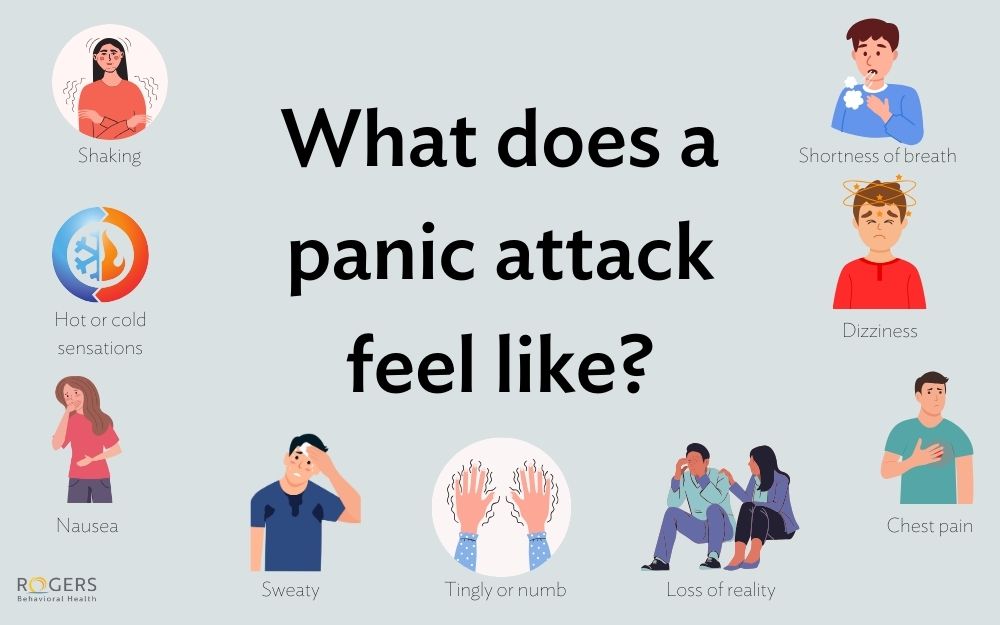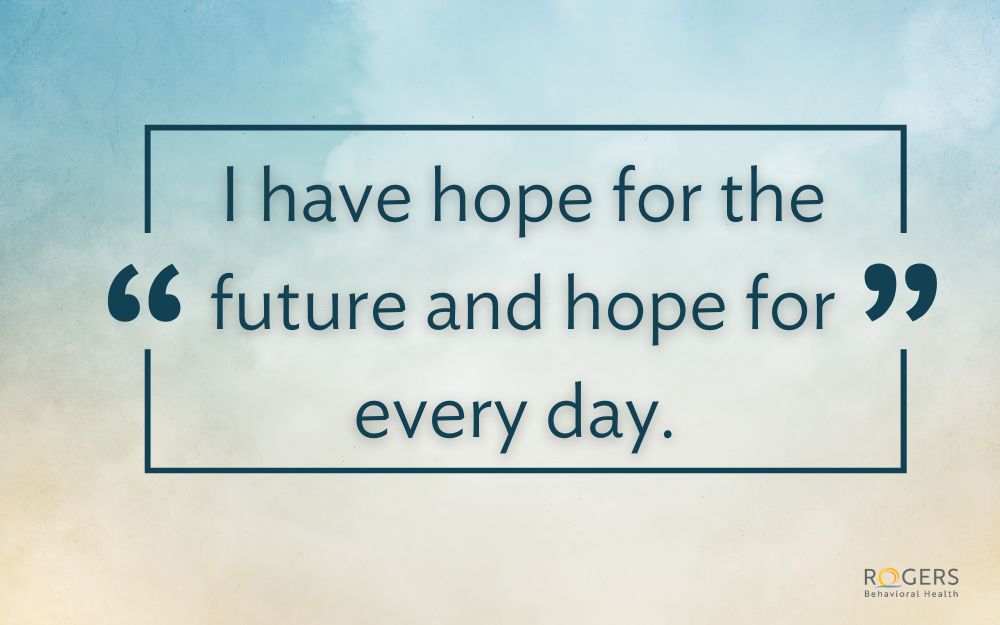Anxiety and anxiety disorders: what’s the difference?

Share this article:
Nearly 32% of adolescents and 31% of adults will have an anxiety disorder within their lifetime, according to the National Institute of Mental Health.
Have you ever felt anxious? Anxious about giving a presentation, running a race, or cheering on your favorite sports team to win a championship? Everyone experiences anxiety at some point in their life.
“Humans all have anxiety about something—we were designed to have fear to help with our survival. So feeling anxious about the big game or a test is normal and expected,” explains Dr. Stephanie Eken, psychiatrist and regional medical director for Rogers.
But when does healthy anxiety become an anxiety disorder?
“When typical experiences like going to school or work bring on intense anxiety that prevents someone from carrying on with day-to-day functioning, that’s when we classify the behavior as an anxiety disorder,” says Dr. Eken.
As she explains in a podcast, not all anxiety disorders are the same by definition or the cause. Disorders present themselves in different forms for each person depending on individual risk factors.
-
Generalized anxiety disorder: Persistent, intense fears about real or perceived threats that disrupt day-to-day functioning.
-
Panic disorder: Sudden rushes of intense fear including a racing heart, sweating or shaking; dizziness or nausea; hot or cold sensations; feeling of choking; and loss of reality.
-
Separation anxiety disorder: Difficulty being away from someone, typically a child from parents.
-
Social anxiety disorder: Fear and avoidance of social situations.
-
Selective mutism: Remaining silent in situations where speaking is encouraged.
-
Agoraphobia: Extreme fear about circumstances that may cause embarrassment, vulnerability or panic such as fear of being in public.
-
Postraumatic stress disorder (PTSD): Recurrent, frightening dreams or flashbacks about a traumatic event and avoidance of places and people that relate to the event.
How does it feel to live with an anxiety disorder?
A former Rogers patient describes what life was like with her anxiety disorder.
“I wouldn’t leave my house except to attend work. Instead of feeling joy when sitting next to my daughter, I felt sick. I better call my mom in the middle of this panic attack … I barricaded myself in my bathroom. I couldn’t have someone else’s belongings in my house like my daughter’s friends; they probably brought bed bugs. I wonder if I put enough bug strips throughout the house? I should message my doctor again to order a new HIV test, surely the past 14 negative tests were wrong. I knew I needed intensive intervention when these thoughts plagued me so terribly that being dead was my only solution.”
4 tips to keep in mind
-
Knowing that everyone experiences anxiety makes it easier for someone to dismiss when they are actually suffering from an anxiety disorder. People think that maybe they don’t need to be evaluated because everyone has anxiety, but not everyone experiences an actual disorder. In fact, according to the Anxiety and Depression Association of America, only 36.9% of those suffering from the disorder receive treatment.
-
Children who are experiencing anxiety disorders don’t know how to describe it. “Children often don’t have the language to communicate the anxiety they’re feeling. You have to watch their behavior closely for it,” says Dr. Eken. As our “Understanding Childhood Anxiety” blog post explains, children deal with their anxiety in different ways.
-
There is a lack of understanding about how severe the disorder is and the dysfunction it brings. Some individuals can’t leave their house or be around others. Research shows that the risk of having a co-occurring disorder such as depression is extremely high.
-
Some of the most crippled by an anxiety disorder seem to be the most successful in life. Straight “A” students and high-achieving professionals may look like they have it together, but could be suffering underneath because of perceived high expectations on them. “Expectations grow for what they’re capable of as they achieve more, and it becomes harder to maintain,” points out Dr. Eken. If someone you know fits this mold, she says it’s best to ask them how they’re doing and have an honest conversation to alleviate the pressure even if just a little.
To learn more from our experts about anxiety and anxiety disorders, visit our Anxiety in schools webpage for more blog articles, podcasts, tip sheets, and more.
Concerned you or someone you know could have an anxiety disorder?
Take our new, confidential anxiety quiz that helps flag risks for an anxiety disorder. Developed by our clinicians, the quiz helps determine if a person behaves in a way that demonstrates a tendency toward an anxiety disorder.
For more information on anxiety treatment at Rogers, click here.



